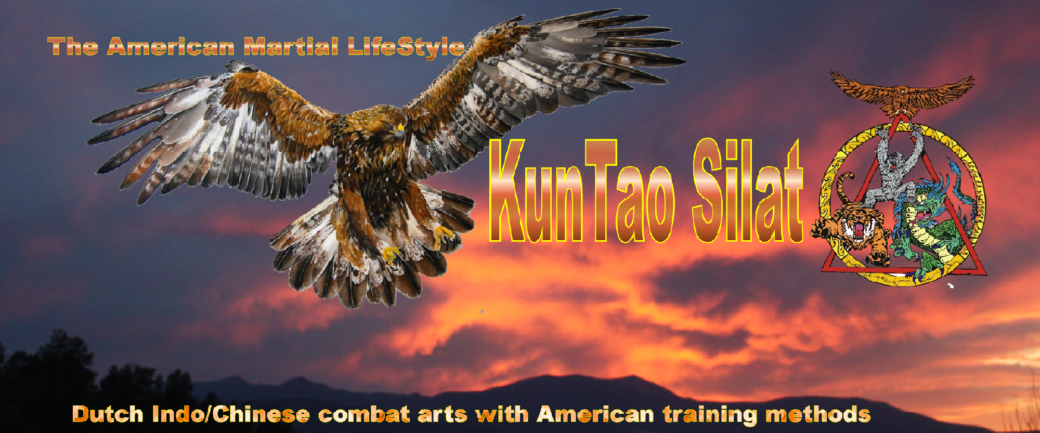Recently, a member of the Distance Learning Program asked me about the similarities and differences between the Filipino Martial Arts (FMA) and KunTao Silat. As there is much crossover culturally and technically across the Southeast Asian martial arts, and many KTS players have a background in FMA, I thought this would be a great topic to share with all of you. Bear in mind that there are dozens if not hundreds of individual FMA systems out there, so I replied in generality. As always, life is a bell curve and variety exists.
”I love your question about FMA and KunTao Silat. As cousins in the family of Southeast Asian martial arts, they share many commonalities. Both systems have concepts like defang the snake, triangle footwork, use of the elbows and knees at close quarters, and functional knife work. Both are meant to be practical and effective from the get go, and favor gross motor skills that transfer to both armed and unarmed contexts.
To my experience the major difference between KunTao Silat and most FMA is not in the techniques so much as the strategy and tactics. Many FMA systems maintain a “dueling” format where two armed and well trained fighters fence at their preferred range. If an advantage is achieved, the FMA player may close in to sweep or throw their enemy, or they may keep at the range of the weapon being employed. Traps and disarms occur within the rhythm of the flow between the players. Timing and rhythm drills incorporating major handwork and footwork help develop the attributes to deliver technique effectively.
KunTao Silat assumes ambush by an enemy who believes that he possesses an advantage. As such, we try to inculcate an automatic offensive response that ideally incapacitates, but at least disrupts, the attacker long enough for the defender’s freeze response to break. Rather than fence or spar at range, the KTS player seeks to close as quickly as possible and disrupt the balance and structure of their attacker, sending them to the floor. Traps and disarms are secondary to the maiming and disruption of the enemy’s offensive capabilities, as there could be more attackers, and thus tend to occur after the enemy’s balance is compromised. In lieu of hubud style drills, we play sticky hands to build attributes in an environment of play where the student can discover the principles and develop techniques of their own. Additionally, the Chinese and Indonesian arts use forms as a pedagogical tool to provide for not only technical skills but the conditioning of the body and the development of body mechanics.”
What do all of you think? I’d love to get a conversation going!
Dr. Jon
Discover more from KunTao Silat
Subscribe to get the latest posts sent to your email.

Great article. Thank you.
Thank you! I always appreciate feedback from the KTS community.
How many of you study or have studied FMA?